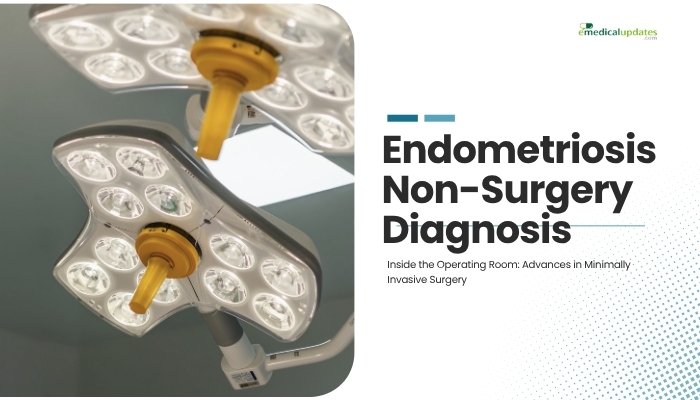Introduction
The prospect of a single blood test that can screen for 50 different cancers seems almost too good to be true. Yet that’s precisely the promise of the Galleri test from biotech company GRAIL. By detecting certain genetic or epigenetic changes in circulating tumor DNA (ctDNA), Galleri aims to spot multiple malignancies—many lacking standard screenings—long before symptoms appear.
While it has generated excitement in oncology, questions remain about how well it works, what it can and cannot do, and how it might fit into routine medical care. This article explores the science behind the Galleri test, the evidence for its accuracy, and its potential role in multi-cancer early detection.
How the Galleri Test Works
Multi-Cancer Early Detection (MCED)
The Galleri test is part of a growing field of multi-cancer early detection (MCED) assays. These tests analyze biomarkers (often cell-free DNA) in the blood. If a tumor is present, it sheds mutated or abnormally methylated DNA fragments into circulation. By comparing these fragments against reference methylation patterns known to be associated with cancer, Galleri attempts to:
- Identify whether a cancer signal is present.
- Suggest Tissue of Origin – i.e., which organ system is likely affected.
Methylation Markers
Unlike some other liquid biopsies that scan for specific mutations, Galleri focuses on DNA methylation profiles. Methylation patterns can distinguish normal from malignant cells, and also differentiate among cancer types. This approach helps reduce the chance of missing diverse driver mutations—since methylation changes often occur across multiple tumor subtypes.
Accuracy and Validity
Sensitivity and Specificity
Early published data indicate the Galleri test has:
- Reasonable Specificity: A low rate of false positives, meaning most positive signals indeed reflect real malignancies.
- Variable Sensitivity: It detects many but not all early cancers. Detection rates can be lower for certain tumor types or stage I disease. That said, it significantly outperforms no screening at all for malignancies like pancreatic, ovarian, and others that typically lack routine screening methods.
Clinical Studies
Major studies include:
- CCGA (Circulating Cell-free Genome Atlas): A large-scale project that helped refine Galleri’s approach, enrolling thousands of participants to create a robust tumor vs. healthy reference.
- Ongoing Trials: Additional prospective trials aim to measure whether using Galleri reduces advanced cancer incidence or improves mortality outcomes. These endpoints take years to confirm.
Limitations
- Not All Cancers: While it claims to detect 50+ cancers, no test is foolproof. A negative result doesn’t guarantee zero cancer.
- Cancer Signal Origin: Tissue of origin predictions are not always perfect, requiring follow-up imaging to pinpoint the tumor site.
Practical Considerations
Who Might Benefit
- High-Risk Individuals: Those with family histories of multiple cancers, certain genetic mutations, or prior cancer might consider adding Galleri testing to conventional screening.
- General Population: The test may be an option for middle-aged or older adults concerned about less common malignancies. Still, cost and coverage remain uncertain.
Insurance and Cost
Currently, Galleri is typically out-of-pocket in many areas since guidelines don’t universally endorse it. Pricing may be several hundred to over a thousand dollars, although costs might decline as usage expands and as evidence for clinical benefits accumulates.
Follow-Up Protocols
A positive result prompts more diagnostic imaging, like CT or MRI scans, to locate the suspected tumor. Patients must be prepared for potential false alarms and the anxiety or additional procedures they generate. The test’s utility depends on having access to appropriate follow-up care.
Benefits and Drawbacks
Potential Advantages
- Broader Cancer Coverage: Catches tumors not addressed by standard screenings (e.g., pancreatic, liver, ovarian).
- Early Detection: Identifying cancer when it’s more treatable can reduce late-stage diagnoses and possibly lower mortality.
- Single Blood Draw: Minimally invasive, possibly repeated yearly.
Concerns
- False Positives: Even a small false positive rate can lead to many unnecessary scans and biopsies in a low-prevalence population.
- Uncertain Outcome Data: While detecting early cancer is promising, we still need solid proof it lowers cancer-related death over time.
- Cost-Effectiveness: Currently expensive; large insurance coverage would hinge on evidence of real mortality benefit.
Ongoing Developments
Large Prospective Trials
Studies like STRIVE or PATHFINDER are evaluating real-world usage, including:
- Participant Diversity: Both average-risk adults and high-risk subgroups.
- Long-Term Follow-Up: Determining if early detection through Galleri changes survival or quality of life.
Evolving Guidelines
As more data emerges, professional bodies (ASCO, NCCN, etc.) may issue guidance on whether or how to incorporate Galleri or other MCED tests into routine care. Widespread recommendation awaits conclusive proof of mortality reduction.
Potential Combination Approaches
To bolster accuracy, some propose combining multi-cancer blood tests with targeted screenings (like mammograms or colonoscopies) to minimize missed tumors or false positive rates. Future screening strategies might incorporate both conventional methods for common tumors and an MCED test for rarer, hidden cancers.
Frequently Asked Questions
- Does the Galleri test detect every cancer?
- It scans for signals of over 50 types, but no test is 100% comprehensive. Some cancers may remain undetected.
- How often should one take the test if chosen?
- GRAIL suggests annual use, though formal recommendations are pending further research data.
- Is it covered by insurance?
- Not routinely. Some private insurers may partially cover it if ordered by a physician, but official coverage guidelines are still in flux.
- Are false positives a big concern?
- They exist. A positive result always requires imaging or biopsy to confirm or rule out a real tumor.
- Could Galleri replace standard screenings (like mammograms)?
- Not yet. Experts advise continuing recommended screening for breast, cervical, colon, and lung cancers. Galleri is more of an adjunct or added layer at this time.
Conclusion
Multi-cancer early detection with blood tests such as the Galleri test offers an exciting glimpse at a possible future where routine draws pick up multiple malignancies before symptoms appear. While early trial data suggests promising sensitivity for various advanced tumors—and some potential detection of earlier-stage disease—definitive proof that it reduces cancer mortality is not fully established. Meanwhile, cost, coverage, and handling of potential false positives remain key challenges.
Nevertheless, for those at higher risk or with the means to self-fund the test, Galleri might provide some additional screening reassurance, especially for rare or difficult-to-screen cancers. With ongoing trials and maturing real-world data, the promise of a single blood test to detect multiple malignancies might evolve from an ambitious concept to a viable new frontier in routine preventive care—transforming how we approach early detection in oncology.
References
-
Liu MC, Oxnard GR, et al. (2020). “Sensitive detection of multiple cancer types with a methylation-based blood test.” Ann Oncol.
-
GRAIL. (2023). “Galleri multi-cancer early detection test: progress updates.”
-
US Preventive Services Task Force (USPSTF). “Guidelines on cancer screening.”
-
Chen M, et al. (2021). “Clinical validation of multi-cancer detection in asymptomatic populations.” J Clin Oncol.




